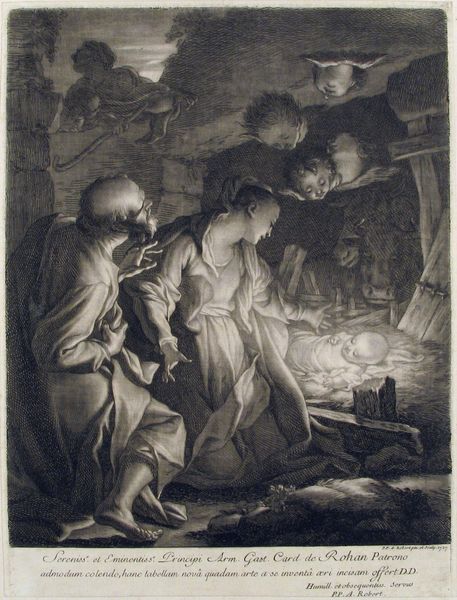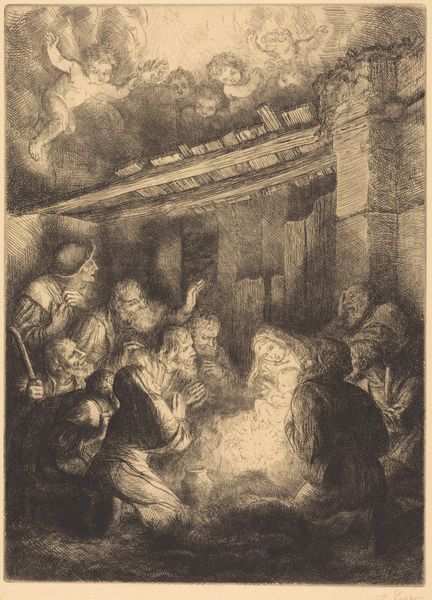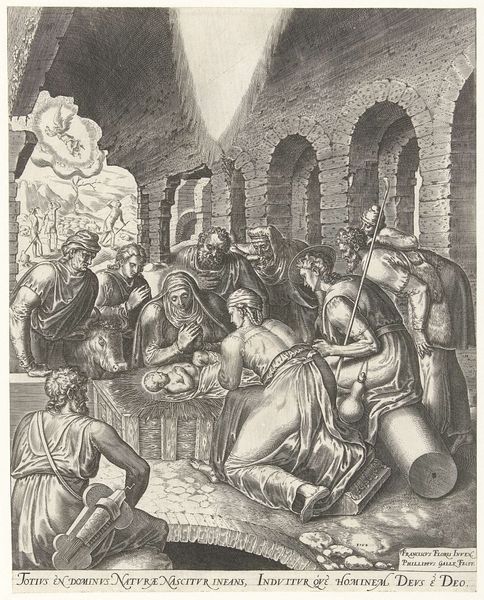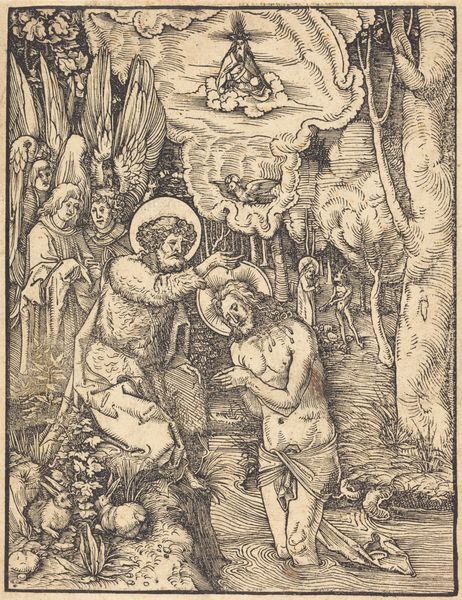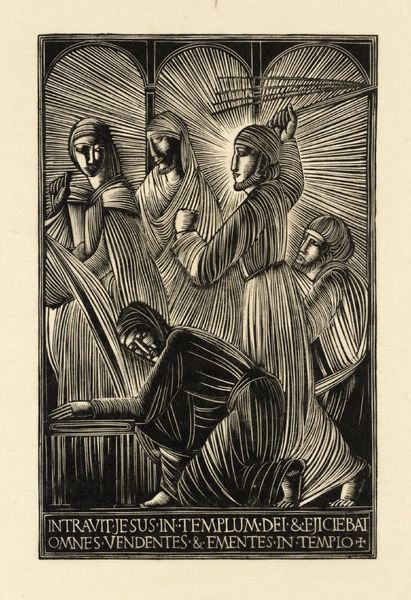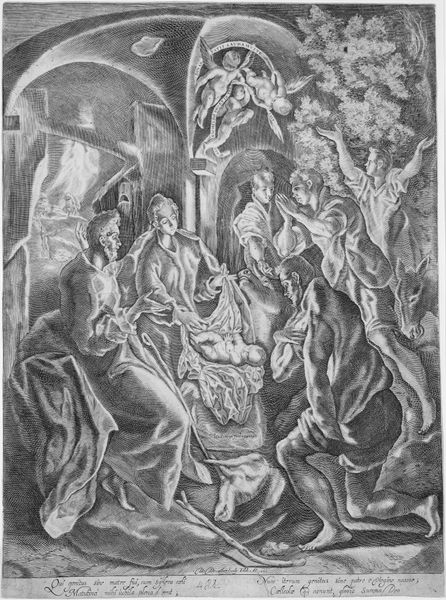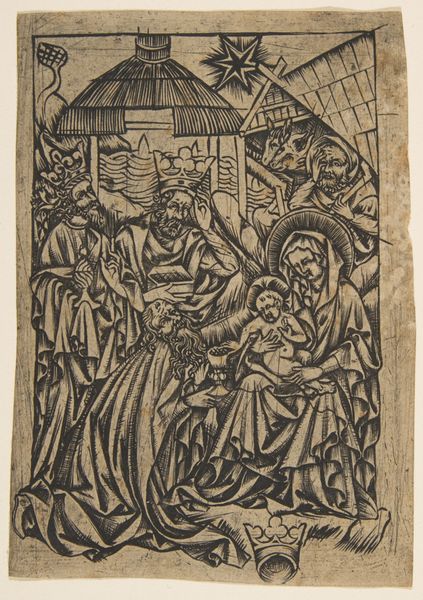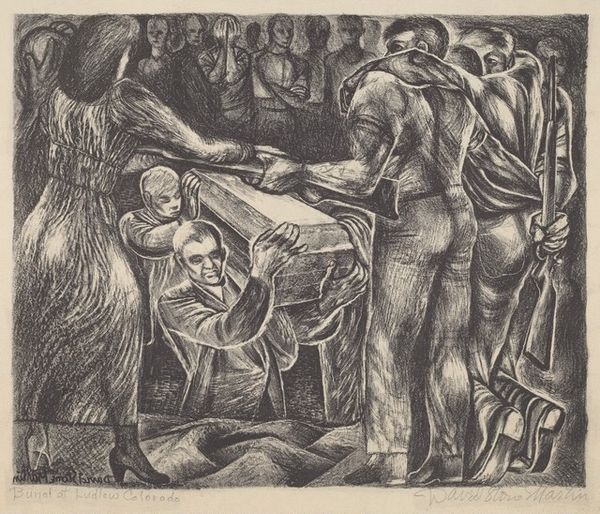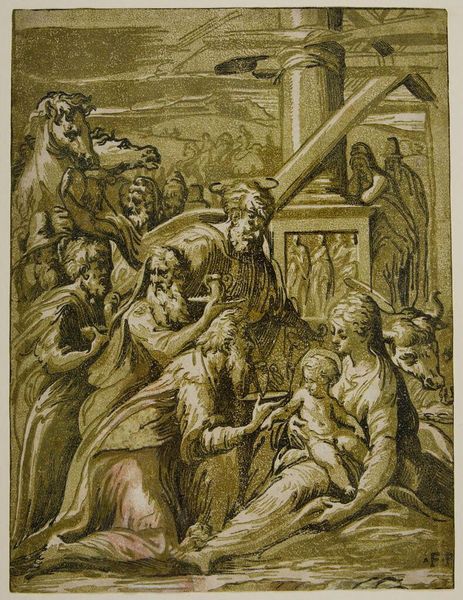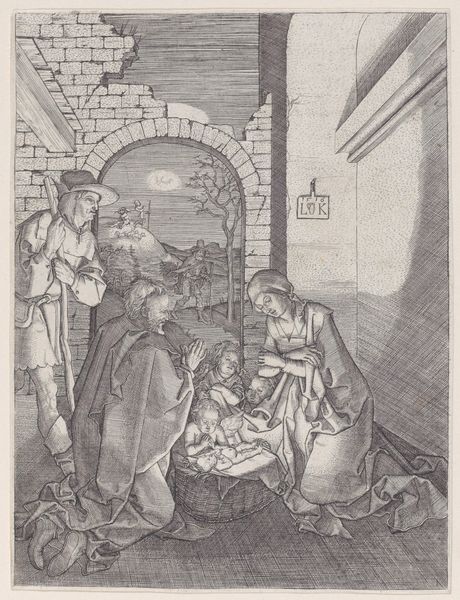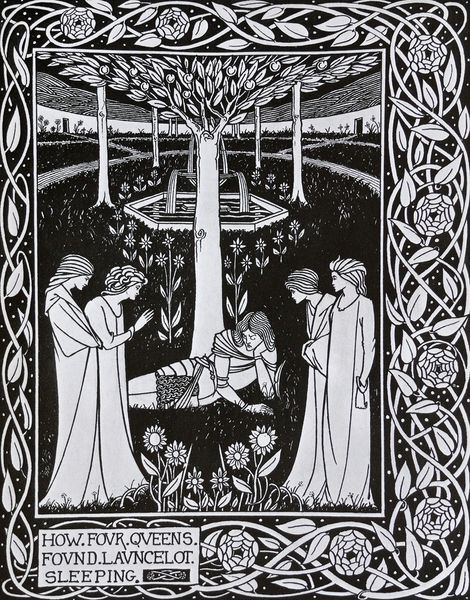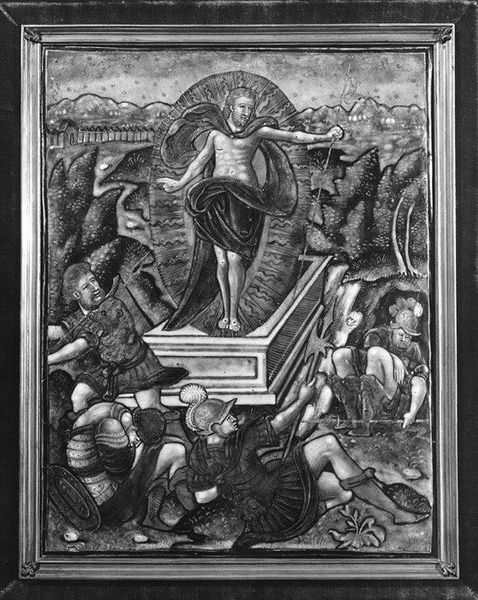
Evening on the mountain meadow. Illustration To Mykhailo Kotsyubynsky's book 'Shadows of Forgotten Ancestors' 1966
0:00
0:00
graphic-art, print, woodcut
#
graphic-art
#
medieval
#
narrative-art
#
pen drawing
# print
#
pen illustration
#
pen sketch
#
figuration
#
ink line art
#
pen-ink sketch
#
woodcut
#
line
#
pen work
Copyright: Georgyi Yakutovytch,Fair Use
Editor: This is Georgyi Yakutovytch’s "Evening on the Mountain Meadow," an illustration from 1966 for Mykhailo Kotsiubynsky’s book, "Shadows of Forgotten Ancestors." Made with woodcut, the striking contrast immediately draws me in. What symbols or deeper meanings do you perceive within this image? Curator: The use of black and white in this graphic art reminds us of medieval woodcuts, evoking an archaic feel. See how the figures cluster around the fire, the sheep penned above, within an enclosed space. The light from the fire pushes against the darkness, literally and metaphorically, suggesting both warmth and a sense of being hemmed in. Editor: I do see that. The sharp lines and patterns almost make it feel claustrophobic, despite being set on a mountain meadow. Is that a cultural element or simply the artist's style? Curator: I think both are intertwined here. The artist creates visual motifs alluding to cultural memory: note how the patterned clothing and the shepherd's tools link the figures to traditions stretching back centuries. The angularity might express a tension between inherited ways and encroaching modernity. Does the scene strike you as a moment of comfort, or perhaps of anxiety? Editor: It feels more like anxiety now that you mention the tension with modernity! The faces seem etched with worry, and the fire, though a source of light, casts stark shadows. It's like they are holding onto their traditions as the world changes around them. Curator: Precisely. Yakutovytch isn't just illustrating a story, he is embodying a cultural crossroads. The figures become symbols of endurance, holding tight to ancestral identities. What do you take away from that? Editor: I see the artwork as more than just an illustration, it's a powerful commentary on preserving cultural identity in times of change. I appreciate the way the artist imbued it with symbolism! Curator: Indeed! Considering the visual language of cultural heritage can open our eyes to continuity across time.
Comments
No comments
Be the first to comment and join the conversation on the ultimate creative platform.
